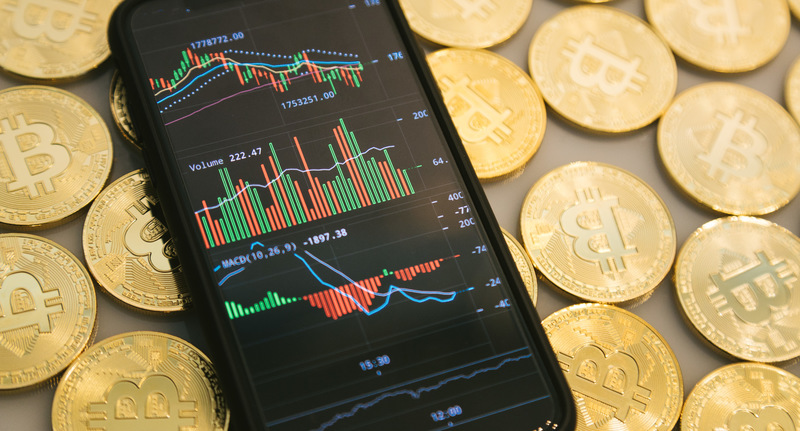Kate’s Data Breach Sparks Urgent Call for Enhanced Security Measures
After Kate Middleton's alleged data incident and possible internal attack at the London Clinic, there's a clear need for security in cyber...

As Bitcoin emerged in the global domain back in 2009, it was tagged as an inflation hedge.
The need for inflation hedges arose as a result of uncertainty surround the fact that central banks were undertaking unconventional monetary policies, such as quantitative easing (QE). Over time, this led to a significant increase in the money supply – which drove the rate of inflation.
In order to understand which coins have the lowest inflation rates, it’s important to first understand what inflation is.
Inflation is defined as an increase in the price of a basket of goods and services over a period of time. The Consumer Price Index (CPI) is often used as the metric for inflation. The CPI measures the prices of a fixed basket of items, including food, housing, clothing, transportation, and healthcare. The changes in these prices are used to calculate the inflation rate.
Cryptocurrency prices are not based on the CPI. Rather, they are based on supply and demand. When there is more demand for a cryptocurrency than there is supply, the price of the coin increases and when there is less demand the price reduces. Cryptocurrency prices are also affected by speculation, as investors buy coins in the hopes that they will increase in value.
While cryptocurrency prices are not qualified by inflation, it is possible for them to be affected by it. For example, if the US dollar were to experience high inflation, this would likely lead to an increase in demand for Bitcoin (BTC), as investors would look to protect their assets from the eroding value of the dollar.
However, it’s important to remember that no asset is completely immune to the impact of inflation. Inflation does affect all cryptocurrency assets, including the likes of Bitcoin, which is sometimes referred to as “inflation resistant.” This is more so because mining rewards for new Bitcoin blocks are automatically halved every four years, and inflation rates for bitcoin inevitably fall in 4 year cycles.
Bitcoin has a capped supply, which means only a certain amount can be mined, after which no other tokens can enter circulation. The capped supply is an important distinction to something like the US dollar, which has no hard cap on supply and can be printed infinitely. Despite a maximum supply of coins, inflation also exists in all other cryptocurrencies.
All cryptocurrencies are subject to inflation, but some are better than others. In this article we’ll be discussing the lowest inflation coins.
Cryptocurrency inflation rates are also predictable and controllable, distinguishing them from fiat money.
Inflation is a very critical topic in the crypto industry. As mentioned in the first part of this article, all cryptocurrency assets experience inflation at some point. For some, the inflation rate can be less than 1%, while for others, it can exceed 10%. Here are some of the lowest inflation coins in terms of percentage:
Bitcoin’s buying power grows over time, and is known as an “inflation-resistant” asset than “inflation-proof”. An inflation-proof coin is one that is completely protected against all external influences. In other words, the price of an inflation-proof coin is only determined by the market forces of supply and demand. Bitcoin is typically seen as a reliable inflation hedge in the finance industry because of its sheer market cap.
According to Woodbull, the current inflation rate of BTC stands at 1.7%.
Monero is considered as one of the lowest inflation coins because its block reward doesn’t decrease over time like Bitcoin. Monero has a flat block reward that will always be 0.3 XMR per block. This means that the rate of new Monero being introduced into circulation will always be the same.
Ethereum is the second largest crypto coin in the world by market cap. Ethereum is a deflationa system with a block reward that decreases over time. There is no maximum supply for Ethereum, which seems dubious at first glance. However, it’s crucial to note that it has a fixed supply of 18 million coins, which are mined annually. This results in a yearly inflation rate of 4.5%. This number will continue to go down as the block reward continues to decrease.
Litecoin is one of the first altcoins in the cryptocurrency world . It was created as a fork of Bitcoin, but with key differences. One of these is that it has a shorter block time, meaning that transactions are processed quicker. Litecoin also has a higher maximum supply than Bitcoin, at 84 million coins. Litecoin has an annual inflation rate of 4,26%.
Cardano is a coin that aims to give underdeveloped nations access to the benefits of blockchain technology. It is unique in that it uses a Proof-of-Stake algorithm rather than a Proof of Work algorithm. This means that it is more energy-efficient than other coins.
The maximum supply for Cardano is capped at 45 billion and 71% of that has already been released. Cardano’s current inflation is around 1.95%.
Not all coins are low-inflation currencies, some are high-inflation coins as well. These are generally new coins that are trying to increase their market share quickly. A popular example is Bitcoin Cash with an inflation rate of 8.26%.
Inflation is not all negative. In fact, a moderate level of inflation can increase spending and boost the economy.
After Kate Middleton's alleged data incident and possible internal attack at the London Clinic, there's a clear need for security in cyber...
A guide on how to buy Bitcoin using a credit card for first time users and steps to use when registering an account.
There are a few key differences between a spot Bitcoin ETFs and other Bitcoin ETFs in how they are structured and direct exposure to...
While legislation and decentralisation might not go hand-in-hand, Bitcoin adoption might thrive with more regulation.